Jennifer Jordan was a striking performer in adult films in the 1970s – and one who could really act. She was highly valued by directors like Joe Sarno, Roberta Findlay, and Henri Pachard, who appreciated her ability to portray a character rather than just be another warm body in a sex scene.
She always stood out – in movies such as The Fireworks Woman (1975), The Big Con (1975), Anyone But My Husband (1975), Abigail Lesley is Back in Town (1975), and The Naughty Victorians (1976) – and worked with future Hollywood stars like Wes Craven and Sean Cunningham. She was even on an episode of ‘Saturday Night Live’ in its first season.
For years, I guessed at her background, surmising a possible formal thespian training. Occasionally I thought I spotted her in the background of mainstream New York films like Serpico (1973) or The Seven-Ups (1973), but her name never appeared in the credits.
Then fellow actor Jamie Gillis told me that he’d been friends with her back in the 1970s – and revealed her real name, so I reached out to her hoping she’d be interested in sharing her memories.
This is the first part of her story (the concluding part will be out next week.)
With thanks to Jon and Vinny Leary.
———————————————————————————————————————————————-
Jennifer Jordan was nothing like a typical adult film star. Or rather, she was exactly like an adult film star in 1970s New York, an era and location when there was defiantly no single standard for how an adult film star should look or act.
On screen, she was far from the alluring sex kitten that many X-rated films demanded. On the contrary, she seemed to have a perpetually scowling and contemptuous attitude, as if, deep down, she thought that making sex films was probably not the best option for a talented, aspiring actress… even as she realized that it was probably her only option.
A few years ago, I learned that she working as the front-of-house manager at Café St Barts, a midtown restaurant in New York. It wasn’t far from where I worked, so I booked a lunchtime table at the restaurant and settled down for a light salad – and hoped for a sight of the artist formerly known as Jennifer Jordan. Halfway through the meal, a larger-than-life, flamboyant dame appeared, greeting diners warmly and loudly in all directions. She wore colorful silks and had strikingly loud red hair, and obviously possessed a character to match. Her persona was like Bette Davis in her prime.
A few days later, I phoned her and introduced myself. She was skeptical of my interest in the films she’d made almost forty years before, but then I mentioned the name Joe Sarno. Suddenly her manner changed, and she warmed to the conversation. “Where do Joe and Peggy live now?” she asked, which was ironic because they still lived in the same place where they’d first met Jennifer back in 1975, a small apartment only half a mile from the restaurant where she now worked.
I arranged a reunion with the Sarnos at an Italian restaurant the following week – which was followed by similar get-togethers with her one-time acting friend, Jamie Gillis, and then an evening with the producer and male lead of ‘The Naughty Victorians’ (1975), John Butterworth and Beerbohn Tree. And so, Jennifer Jordan started to reconnect with the past in adult films that she had buried years before.
When I met Jennifer, she lived in an apartment on Riverside Drive on the Upper West Side with her partner, Walter. We’d meet on a regular basis in local bars and restaurants, and though we had many conversations about her career, we always found a reason to delay a formal interview. It would be too forced, we agreed, so I gave eventually up on the idea, and instead we agreed to tape the conversations whenever we met.
At first, she minimized her involvement in X-rated films, claiming her film work was merely a brief, passing affair, lasting at most a few months and all over by the mid-1970s. But after a few drinks, the stories flowed. And she liked to drink. A lot. It was a habit she’d developed in the alpha male theater world of the early 1970s, and it continued unabated into the late hours of our encounters and across many outrageous stories. In vino veritas, and then some.
She could be rude, crude, and vulgar. She could be defensive, loud, and opinionated. And yet, she was always thoughtful, smart, and generous. I could never work out whether she regretted her X-rated film past, or if she was secretly amused that she’d had a bigger, more long-lasting impact than countless other acting wannabes that she’d worked with over the years.
What follows are some highlights from our many conversations reflecting our friendship of over a decade.
*
1. Jennifer Jordan – Early Years
When did you get your start as an actor?
I think I did (the musical) ‘Oliver’ when I was 11. [laughter] That was when I first knew I wanted to be an actor. It went downhill after that. [laughs]
What part did you have?
Oh, how the hell should I know? Probably Nancy. It was too long ago. I hate musicals anyway.
You were born in 1952?
Mind your own fucking business. Who wants to know? [laughs]
And where did you spend your upbringing?
I was adopted. My adoptive parents were of German-origin and called Roush. I grew up in Shaker Heights, Ohio, just outside of Cleveland… Basically Bum-fucksville. It was so boring there that I left as soon as I could. I was 17.
But, did you know that one out of every eight actors in New York and SAG comes from Ohio? Well, that was true forty years ago and I’m sure it’s probably still true today. So I was just one of a long line.
But you actually started out in music?
Yes, I attended the Kulas music conservatory in Berea, just down the road from Cleveland, while I was in high school. I had a rebellious streak from an early age, but my parents wouldn’t let me play the drums or the sax – girls did not do that in those days – so I had to play the flute and the piano instead. In fact, I studied to be a concert pianist from an early age right through to when I left home.
Did you enjoy playing the piano?
Not really. I liked performing, but I wanted to act.
Where did you first get the chance to do that?
I acted at the Berea Little Theater from 1967 to 1969. I was in all the productions. One of the first was ‘Midsummer Night’s Dream.’ I loved it, and so when I graduated high school, I enrolled in courses with the Baldwin Wallace College Theater Department, and I interned there so I could save up some money.
What were you saving the money for?
“What do you need money for?” What kind of a question is that? I wanted to be independent and free! I wanted to hit the road and travel.
So where did you end up going when you’d saved up enough?
I went to live in Hawaii for eight months. That was in 1969.
What did you do there?
I bummed around, did some bar work, camped with a boyfriend on the edge of a mountain… which then exploded, and we realized that it was actually a volcano. That was the last time we fucking camped there.
And I got parts in every film and TV show that shot in Hawaii.
Like ‘Hawaii Five-O’?
Exactly! I was in small roles in three episodes, and I got to hang out with guys like Jack Lord and Jim MacArthur who were the leads. A few others too. By now, I was bitten by the acting bug: I knew that I wanted to act as a career, so I returned to Ohio and enrolled in Kent State University as a theater major.
That was a troubled time for Kent State: were you there at the time of the shootings? (Note: In early 1970, the Ohio National Guard fired into a crowd of Kent State University demonstrators protesting the Vietnam war, killing four, and wounding nine Kent State students.)
I was.
At the risk of sounding glib, what was that like?
Deep and profound. And damaging. It scared us all. It scarred us all too. I mean… it broke any trust in authority in the most complete and long-lasting way. I don’t think any of us were the same again. It politicized us.
So much for free speech… We were protesting peacefully against violence. I mean… is there a more powerful statement that one can make? To reject war peacefully? And then our own government just… shot some of us dead.
How did it affect you personally?
Where do I fucking start? I started drinking. I never really stopped drinking after that. One moment, I had been on the beach in a TV show in Hawaii, and the next moment, I had witnessed a massacre.
I ran away from home again a few months later.
Where did you go?
I went further east and ended up in Media, Pennsylvania. I was troubled.
Why did you choose Media?
I heard there was a small, respected and historic theater, the Hedgerow Theater. I think it was the oldest repertory company in the whole country, and they were looking for people who wanted to act and work there. So I went there and trained with Rose Schulman – an older actress who gave acting lessons. She taught lots of people. Richard Basehart, Margo Skinner, people like that.
*
2. Move to New York
How did you end up in New York?
Are you kidding…? if you’re an actor that’s where you end up!
But what was the spur to go there in the first place?
In 1972, I got a call from my old teacher back at Baldwin Wallace College in Ohio – Bill Altman. He was tight with a crazy fashion designer, Ellen Stewart, in New York. During the day, Ellen sold her fashion items in a basement in the East Village, and at night she turned the same space into an experimental theater.
She used the space to form an Off-Off-Broadway theater group called La MaMa and they put on plays there. It was an underground thing, but it got a lot of attention and buzz.
Bill said I should go and audition there. So I did, and I joined the group in 1972.
Was experimental theater the direction you wanted to go in?
I don’t know about ‘experimental.’ Some was good, some was shitty. But I didn’t like mainstream theater: ‘Jesus Christ Superstar’ and ‘Godspell’ were big on Broadway then, and I hated them. And ‘Hair’, ugh! I was so sick of all that. I was into anything that was more creative.
Weird thing about ‘Godspell’: I’d gone to high school back in Ohio with John-Michael Tebelak who was the one who wrote ‘Godspell.’ In fact, his father was our high school history teacher: he was a nasty man, evil guy. John-Michael killed himself later because of his family.
Anyway, I didn’t like any of that musical shit.
What was La MaMa like?
It was… crazy. A bewildering place. It was a mixture of new and old: the company put on a lot of new plays by new playwrights, but it also believed in a classical approach to acting. That is to say, a very physical approach, which meant you had to do stunts and things like fencing. I remember a lot of tumbling around the mats instead of just acting.
Did you work exclusively at La MaMa at this time?
Are you crazy?! No one could make enough money from La MaMa to survive. But it was a great grounding and training, and I met a lot of similar people there.
What other actors were at La MaMa?
Too many to remember… Whoopi Goldberg, Billy Crystal, Bette Midler, Christopher Walken. And guys like Pacino, Nick Nolte, Joe Pesci were there before me. I remember seeing Harry Reems in some productions, although I had no idea who he was at that time. Just a good-looking guy with a big moustache.
I studied acting with John Lehne, a great actor who was in lots of films, like ‘Serpico’.
What were some of the other gigs you did?
I did understudy roles on Broadway, a Pepsodent toothpaste commercial, and extra work in a whole load of films.
Any films I may have heard of?
So many. Tens and tens of films. One of the first was ‘Groove Tube.’ That was an underground independent which got a cult following. It had Chevy Chase and Richard Belzer. And Jennifer Welles, I think too. In 1974, I was Katherine Ross’ double in ‘The Stepford Wives’ (1975), and I was in a couple of scenes in ‘Three Days of the Condor’ with Robert Redford which Sydney Pollack directed. One was just the back of my head… But I got asked on a date with Redford. He was really interested in me. I passed!
I worked with Shirley MacLaine too: she came and did something quick on Broadway and I worked with her. She was great.
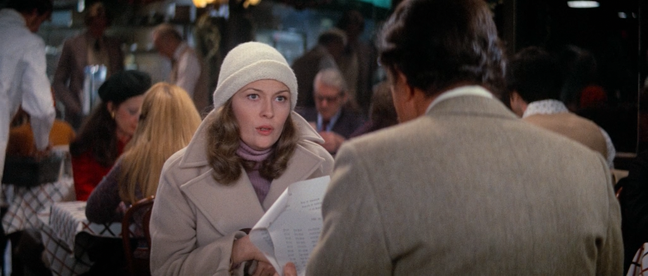 Jennifer Jordan’s back-of-head, behind Faye Dunaway in ‘Three Days of the Condor’
Jennifer Jordan’s back-of-head, behind Faye Dunaway in ‘Three Days of the Condor’
Were any of these films speaking roles?
Nooo! Nothing like that. Just turn up and appear in a scene for a few hours, pick up a check, and hope you get invited back the next day.
Were you more interested in pursuing a theatrical career or did you want to get into movies?
I was an actor! I wanted to do whatever got me work! I only ended up in film because that’s where I got offered work.
Ideally, I wanted to be a bitchy dame, but those parts never came along for a young actress like me. They wanted dumb, pretty housewife types mostly, and I wasn’t that. So instead, I ran around like a wild woman, being an extra and making commercials.
*
3. Jennifer Jordan in Adult Films
Where did that leave you after several years of bit parts?
It left me starving! What do you mean, where did that leave me?! You can be a struggling actor for a few months, maybe a year. But then life becomes difficult. You have to take a regular 9-5 job, and that means you can’t do the auditions. And pretty soon you after that, you give up on your acting dreams.
Is that why you started work in adult films?
I mean… it wasn’t a conscious choice, but… yeah, I guess so. I got offered lead roles in a movie or two, so I thought, why not?
Did the sexual content of the films give you cause you any concern?
Hell yes, it did! Of course it did! I didn’t like that side of it. Especially not at first. It felt weird.
How did you deal with that reluctance?
I probably drank more.
And I tried to convince myself that I could learn as an actor from these films. Or that I’d learn about other jobs on set. Or that no one would ever see these films. Or that I’d meet some contacts that could find me mainstream work. Or that I’d like it.
I tried to convince myself a lot of things. But mostly, I drank.
Do you remember your first porn film?
I don’t like that word.
What word: ‘porn’?
Yeah.
What we were doing wasn’t pornography. This was a business of independent low-budget filmmakers. They just made films that would be shown to an adult audience. It was like a film school for these people. It was the only place you could get that all kind of experience.
There was a strong sexual content to these films though.
I don’t care! You can have sex in a film without it being pornography, right?
I don’t view what I did as pornography.
Maybe I was in denial. And maybe that was what made it possible for me to have sex on camera. I think the reason I never watched many of my films is that I don’t even wanna know what I did. [laughter]
Ok, but do you remember your first adult film?
I remember many of them, but not the strict chronology. It certainly wasn’t one of the better ones, I know that. I have a feeling it was a Shaun Costello movie, shot over a weekend in the country.
That sounds like Love Bus (1975)?
I don’t know. Could be.
What do you remember about Shaun?
Good God. Repulsive. Sleazy.
What do you mean?
He was notorious among the women. I’m sure you’ve heard the stories when you’ve spoken to other actresses. I’m not going to tell you anything that’s not already out there. Speak to C.J. Laing for example. Or Jenny Baxter.
Guys like Jamie (Gillis) were edgy and quirky, not to mention kinky, but they were respectful. Don’t let anyone tell you otherwise. Shaun, on the other hand, was a piece of work. He was just plain nasty.
How so?
He’d change who you were going to shoot with on the day of the shoot, and make you work with someone he knew you didn’t like. Or he’d push an actor out of the way when he wanted a… you know… a climax shot… and then he’d do it himself. Worse, on several occasions, I saw an actress in distress. For whatever reason. And she implored him to stop. And yet he kept filming. Ask Mary Stuart about that. He knew we all wanted the money, so he’d get away with it. The women didn’t like him one bit.
I hope you had better experiences with other filmmakers?
Of course, or else I never would have done more. Most were fine. Many were quite serious about their work.
Was one of those early ‘serious’ films, Sometime Sweet Susan (1974)?
Yes. That was made by Craig (Baumgarten) and Scott (Mansfield, aka Joel Scott). They were more serious guys.
Craig had worked as an aide for (John) Lindsay (New York mayor). He was obsessed with making the next Deep Throat (1972) which had made millions. He kept repeating that his film could do the same, so he poured his heart and soul into it, and he made sure the film got a lot of publicity.
I wouldn’t have thought that the prospect of publicity for one of these films was attractive to you – given you were still trying to make it in the mainstream arena?
Damn right! It turned me off. But then he said that he had SAG approval for the production – which meant that I’d get a SAG union card if I did the film. So I did it!
Why was that such a big deal?
Being a SAG member was a Catch 22 and it probably still is. In those days, in order to get into SAG, you had to do a SAG film. But you couldn’t do a SAG film unless you were already in SAG. So it was rough. But that film is what got me into SAG, and that’s why I did it.
I used the name ‘Sarah Nicholson.’
How did he manage to get SAG approval?
He already had political connections obviously – and one of them was John Maguire, the head of the New York chapter of SAG. Maguire went over the top of the SAG committee and gave Craig SAG approval in “exceptional circumstances.” Craig told me it was shot in the ‘low budget’ category which meant that the total budget had to be less than $100,000.
Apart from getting a SAG card, what was the impact of the film being a SAG production?
Well, for a start, it meant that actors were paid the SAG minimum. The money was paid in two installments: you got $180 per day or $600 per week, and then if the film was released, you got a second payment that was 150% of what you’d been paid during the production.
You can still remember the terms and amounts!
Of course. It was important when your livelihood depended on it! And I had a good teacher: Herb Streicher, otherwise known as Harry Reems, who was the male lead on the film. I’d already seen Herb at La Mama, so it was a surprise when I realized who he was. He was all over the pay and the financials, and he taught me a lot.
Do you know why someone like Craig Baumgarten decided to make an adult in the first place? It seems strange for an aide of the mayor to do that.
I’m pretty sure that it all happened because of Harry/Herb’s softball team! Herb used to be the star of one of the teams in the Broadway League. They all played in Central Park. I went to see them a few times. It was fun. Herb was persuasive, funny, and engaging: he met Craig and Scott there and persuaded them to make the film. Herb was a silent producer on the film, and he told me he made 7.5% of the profits on top of his acting fee. Harry always made out like a bandit [laughs].
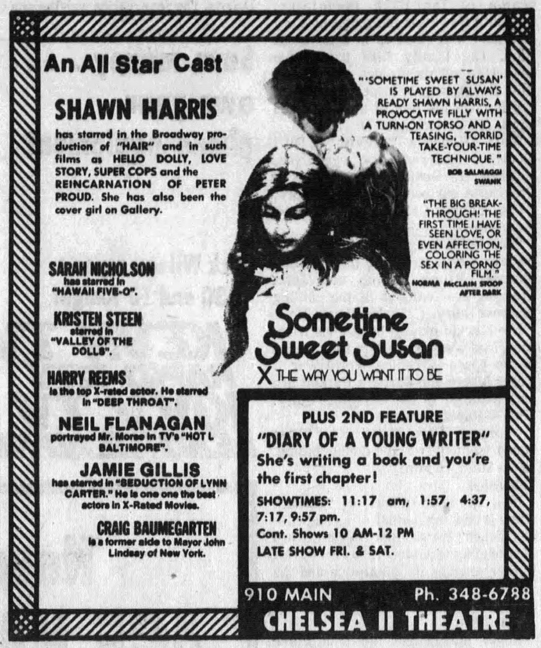 Newspaper ad for ‘Sometime Sweet Susan’ – with reference to Jennifer Jordan/Saran Nicholson’s role in ‘Hawaii Five-O’
Newspaper ad for ‘Sometime Sweet Susan’ – with reference to Jennifer Jordan/Saran Nicholson’s role in ‘Hawaii Five-O’
What do you remember about the production?
The main thing I recall is that Craig and Scott underestimated how important it was to have experienced people in front of the camera. So they wasted a lot of time with… performance problems.
How so?
The lead female (Shawn Harris) was terrified of doing anything remotely sexual. And she was prissy and dumb. So much time wasted trying to persuade her to do anything.
How did it resolve?
I think Craig told Harry to make nice with her and take her out one night. Work his charms on her: Wine her, dine her, 69 her too – probably. Harry took up the challenge and when she returned to the set, this time she did what she had to do.
But that wasn’t the only problem. There were a couple of men who couldn’t perform either. This time Craig took it into his own hands. He re-wrote parts of the script. Cast himself as one of the characters, and did the sex scenes too.
Another big production was Wes Craven’s film, The Fireworks Woman (1975).
That was a real movie experience. It had a real script. Each copy was bound and embossed with a purple ribbon. It was filmed on location with a long shoot, several weeks at least.
What do you remember about Wes Craven?
This was a long time before he was successful with horror films like ‘A Nightmare on Elm Street’ (1984) or ‘Scream’ (1996), and all their sequels. God, the man must have been rolling in money because of those cinematic… abortions that he did
No, these were the days when he had to hide behind a dumb fake name. What was it again…? I think I read it was ‘Abe Snake.’
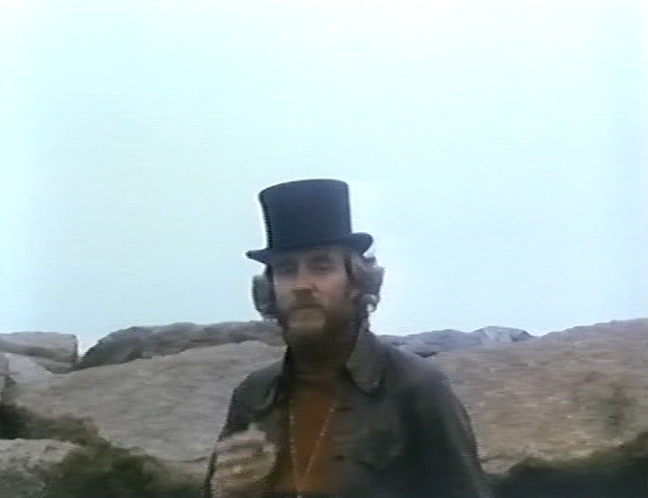 Wes Craven in ‘The Fireworks Woman’ (1975)
Wes Craven in ‘The Fireworks Woman’ (1975)
What was it like to work with him?
He was good. What can I say? He was professional and intelligent, and had a strong vision of what he wanted. In that respect he was no different from others like Joe Sarno. But did I think that he would be the one to go on to be a success in Hollywood…? Probably not! And don’t forget he was in some of these things having sex too!
Back then, he was just one of us: a regular guy trying to make it in the film business and making films to learn the trade. A camera is a camera. Lighting is lighting. Sound is sound. It doesn’t matter what you’re filming, you still have to figure it out.
Do you remember Wes Craven’s production team on ‘The Fireworks Woman’?
Of course! Peter Locke was one of the producers. He became a huge Hollywood producer later. He did all sorts, like The Hills Have Eyes (1977). He was dating Liz Torres – I knew her from the club scene in New York. She was a stand-up comic, singer, actor. So it was weird to have her on set watching everything. They invited me to their wedding. I didn’t go: too weird.
And Sean Cunningham was a co-producer too?
Yeah, it was the three of them, Wes, Peter, and Sean. Wasn’t it Sean that made ‘Friday the 13th’ (1980)?
How did you get the part in that film?
Wes held auditions for the lead roles, and he liked the fact that I was a serrrious actorrrr, dahling! Seriously… I think he was surprised to find someone who’d done theater for years. I remember his pitch to me was: “This is the first film from the lead female perspective, and so she will be in every scene. I need her to be the fulcrum and beating heart of the movie!”
You’re in every sex scene.
Yada yada yada. I know, I know.
There’s a golden shower scene too.
I only vaguely remember that [laughs]. At least the sex scenes supported the character and the story. And Rob (Eric Edwards) was the leading man – he was always fun.
Did you get to know Wes Craven well?
He spent hours talking with me about his religious upbringing and how that informed his script. He was very serious about ‘The Fireworks Woman’, he didn’t treat it all like a throwaway adult film. I think he thought this would be some kind of breakthrough. I liked him, and we kept in touch for a while afterwards.
I was impressed with the production, and I used my new SAG name, ‘Sarah Nicholson’ on this film too.
You usually used the name ‘Jennifer Jordan’ on other films: where did that name come from?
Someone asked me on one of the sets one day. I was just standing there and I needed a name. My best friend when I was a young girl was named Jenny [laughter] and so I just took her name. Jordan just seemed to work well with it. Alliteration like Linda Lovelace probably. [laughter]
*
4. Jerry Denby, and Richard
Tell me about ‘The Bite’ (aka The Big Con) and its director, Jerry Denby.
Jerry had been in the Korean War and learned a little film-making there. He’d been on film sets since the 1960s, directing several of his own.
He was a serious writer too. He wrote plays, and several were produced. I think one was filmed for TV down in Florida. He was talented, and never got the credit that he deserved.
He always spoke about having to go to mob-related figures to get funding for each film he made. As a result, he used a different name on many of them, so God knows which movies were his.
He hired me for the lead role in ‘The Bite’ – or whatever it was called because it changed its name a few times.
What do you remember about the film?
It was a parody of ‘The Sting’ and it had period costumes, vintages cars, and we shot it in old stately homes. The shoot lasted several weeks.
It always surprises me that ‘The Bite’ isn’t a film that is hailed as one of the best of the era. It was a great film! At least, I think it was… I only ever saw it once at a private screening just after it came out.
Jerry got all the best actors of the time: Eric Edwards, Sonny Landham, Andrea True, Jamie. A big, big cast. And all his old film crew buddies were onboard. I think Jerry saw it as his last chance of success in the film business.
One of the crew members was Jerry’s son, who you ended up marrying…
Yes, we met on the set of that film. We clicked straight away. When the film wrapped, Richard came home with me and he never left. We were married in a castle on the sound in Connecticut, and stayed married for over 25 years.
What did Richard do at the time?
He was a writer and a photographer, and he helped out occasionally on his father’s film sets.
How was ‘The Bite’ received?
The film itself was great, but it wasn’t a big success. I think that Jerry took a big loss on it. It was a shame, he didn’t deserve that. It was much better that the one-day wonder crap that was being made. I should know… I was in those too!
After that, Jerry fell on hard times. He came to live with us for a while, but he went downhill. He ended up going to jail for tax evasion. Then he met a Florida woman named Dorothy, and ended his days down there. He passed a few years ago.
You continued acting in sex films for a few more years after that. Did they impact your relationship with Richard?
Yeah, sure. At times, Richard came on location with me – like on a couple of Joe Sarno movies. And once we fell in love, it was difficult. But I mean, the sex scenes weren’t something I really liked doing. It wasn’t like I was doing them because I was living out a kinky sexual fantasy, for God’s sake. As I said, I did the films for the money and to learn how to work in front of the camera.
And did you find that they did help develop you as an actor?
Yes, I think so. We had to improvise a lot because there wasn’t enough money to spend too long filming each scene. I never did loops or any of that kind of junk. If I did, then it was somebody else who spliced me in from something else.
I approached each film like a proper acting challenge. I tried to find something, anything, to bring authenticity to my role. It could be a facial tic, or maybe a prop. I looked for something to hold onto. For example, there was a magnifying glass from the 1920s that was given to me by the art director on a film. I used that in a few films. I liked having something that distinguished me from the rest of the pack.
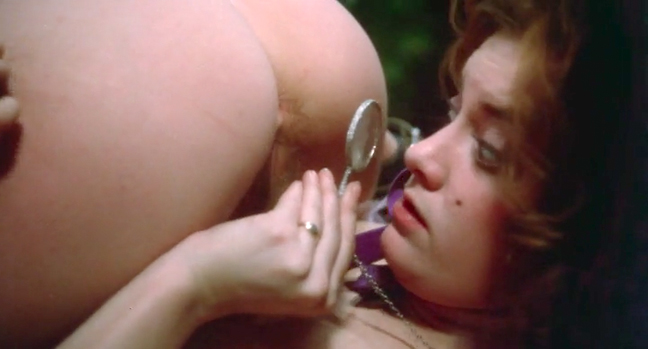 Jennifer Jordan, avec magnifying glass in ‘Naughty Victorians’
Jennifer Jordan, avec magnifying glass in ‘Naughty Victorians’
What about that long cigarette holder?! You seemed to have that in almost every film.
[laughs] Yeah, that’s true. I smoked a lot in those days. The cigarette holder was just a way of making it part of the character so that I didn’t have to put my cigarette down for each take…
 Sweet Punkin, I Love You (1976)
Sweet Punkin, I Love You (1976)
And alcohol appeared as a prop often too.
If it was a bottle of Jack Daniels, then it wasn’t a prop, my dear. I was known for always carrying Jack Daniels with me wherever I went. If you see it on screen, then I was drinking it. Jack was my best friend for a while.
Did alcohol ever become a problem?
Only when the bottle ran dry. I drank then. I drink now. I can handle it.
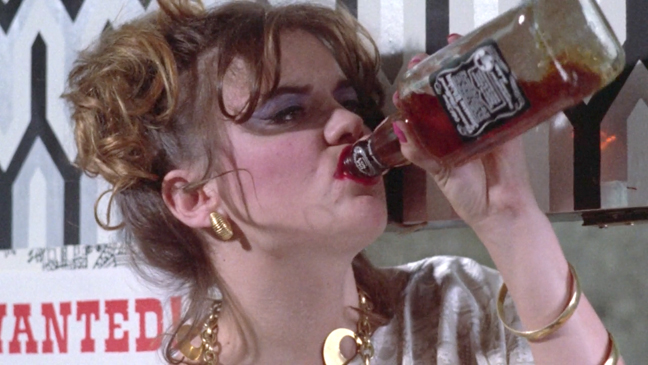 Fantasex (1976)
Fantasex (1976)
*
5. Joe Sarno
Which directors stick in your mind from the early days?
Well, Joe Sarno of course.
How did you come across Joe?
My father-in-law, Jerry Denby, recommended me to him. Joe was looking for actors for Abigail Leslie is Back in Town (1975). I called Joe and he invited me over to his apartment. I met his wife, Peggy, there too. We ate something, and then Joe took me into his office and set up an improv scenario. It only lasted ten minutes, and then he said, “This is great! You’re Abigail. You’re exactly what I’m looking for.” And then we toasted with Aquavit, because it was just before Christmas.
Having good actors was important to Joe.
Yes, he wanted actors who had a clear idea of what they wanted to do, so his direction was very light. He just created an environment where you felt comfortable so you could express yourself. He always hired people who had acting experience, like Eric Edwards, Jamie Gillis, and Mary Mendum and myself. All of us had stage and film experience by then.
And of course, he wrote full scripts for his films.
The best part was that he would put sketches in the side margins with stick men illustrations of the sex scenes to show you what to do – probably because he didn’t like describing the sex in words.
The funny thing about Joe was that he hated filming explicit sex scenes – he preferred soft, suggestive movies. But at the same time, he wanted people to actually have sex because that brought an extra… authenticity to the scene, even though he would only film their faces or their limbs entwining.
What do you remember about the ‘Abigail Leslie’ shoot?
It was lengthy, two or three weeks, out in Amityville on Long Island, which was where Joe grew up. It was an old fishing and beach community. We shot it in the first part of 1975, I think, and it was so cold. But Joe treated us all well, everyone bonded, and we had a great experience.
I became good friends with Joe and Peggy after that, and saw them for years afterwards. They were like second parents to me. I lost touch with them over the years, and so I was very grateful you re-united us all together again.
I could see how much affection they had for you when we all got together.
They’re the sweetest people. Such a unique couple. Old fashioned and quiet… and they made sex films!
Do you remember Mary Mendum, who also appeared in ‘Abigail Leslie’?
Yes. She was ok. A little prissy. She’d been in the stage production of ‘Hair’ and so she took this production super-seriously, though it was always difficult to get her to do the sex thing. I always remember that.
Joe made another film with the two of us, Misty (1976). That was good too.
Mary seemed frail mentally. The last I heard of her was that she went to a mental institution years later when she found her boyfriend in bed with another woman and shot him. Jealous girl.
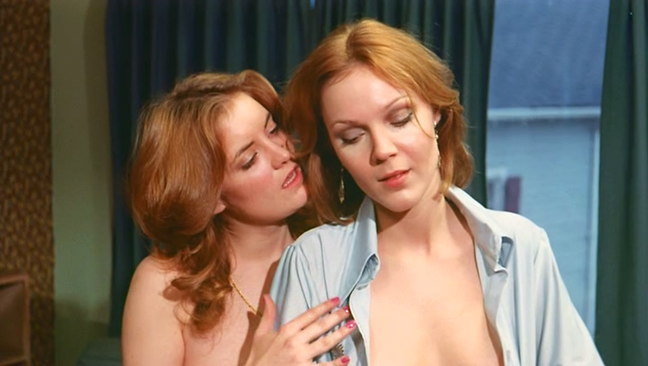 With Mary Mendum, in ‘Abigail Leslie’
With Mary Mendum, in ‘Abigail Leslie’
She seems to be doing better. I visited her in Florida a while ago.
I wish her well. I haven’t seen her since those Joe Sarno films.
(Note: Mary Mendum subsequently passed away in July 2012.)
Tell me about your memories of people you acted with. You mentioned Jamie Gillis.
Jamie was a good actor, always professional. He was entertaining and intelligent, and talked about any subject with a deep self-confidence. Very intense at times. I always had a great time working with him, but he could be extreme. I always looked out of him on set, because I knew we’d have a good time together.
He was very different from Eric Edwards, who I also liked. Eric was sweet and gentle, sensitive, smart, and another good actor.
Jamie, Eric, and I were members of SAG, which meant we were trying to alternate these films with getting… more legitimate work.
What about Sonny Landham?
Sonny was crazy! Such a character. He was a macho, alpha male show-off. He loved to party and had a big cocaine habit which was out in the open for all to see. But he was actually a sweet-hearted and sensitive guy, and a gentleman in old-fashioned ways too. I was friends with him though we never got too close – but I knew I could call on him if I needed anything. I always thought that if I wanted a hitman, I’d call Sonny. [laughs]
Sonny was in almost every film for a time. As was Jamie. Sonny was running around doing anything and everything he’d get his hands on. In more ways than one [laughs]. That man never stopped working. My father-in-law once saw him working as a bouncer in a club. [laughter] Probably because Sonny was a big guy with a scary looking Indian face.
Did you socialize much with the other performers?
Not really. I’d met Richard, which meant that as soon as the scenes were shot, I rushed away to be with him. Besides, many of those people were just a little too wiggy for me. Some people were just so damn high or messed up or whatever. I don’t know what the hell they were doing.
Like who?
I remember C.J. Laing for instance. She seemed perfectly intelligent. But she was so fucking crazy. She had no interest in acting or in the creative part of making these films. She was just acting out, rebelling against who-the-fuck-knows-what. All she wanted to do was something… outrageous sexually to shock everyone. She was voracious. Drugs. Sex. Anything. Too wild for me.
Or Mary Stuart. She was a delicate, sweet girl, but ended up being manipulated by an abusive boyfriend, and found it difficult to escape his clutches.
I wasn’t like either of them. I preferred to mix with people who were more ambitious about their career. I had my own issues, don’t get me wrong. I didn’t exactly operate on the straight and narrow, but I felt I had an endgame in sight.
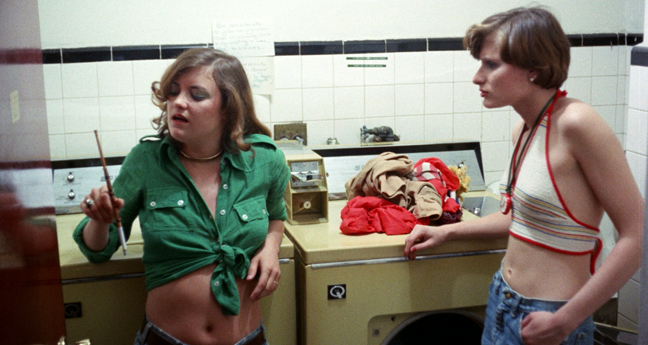 With C.J. Laing in ‘Anyone But My Husband’ (1975)
With C.J. Laing in ‘Anyone But My Husband’ (1975)
*
Next week in the concluding part of Jennifer Jordan’s story: ‘The Naughty Victorians’, the Patty Heart parody ‘Patty’, Saturday Night Live, Roberta Findlay, when Woody Allen’s film crew made a porn film, working with John Holmes and Tony Perez, and what happened when she left the adult film industry.
*
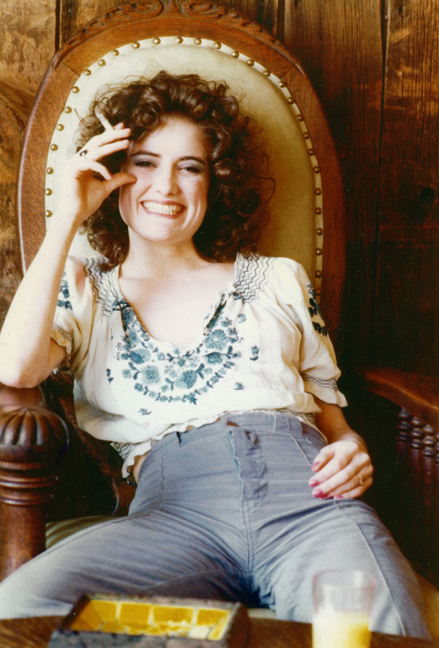
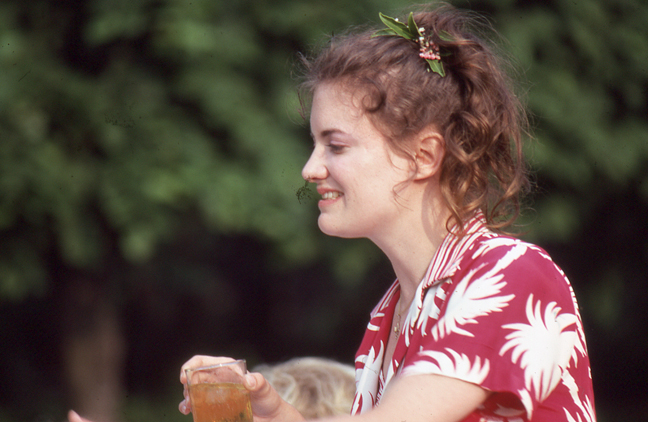
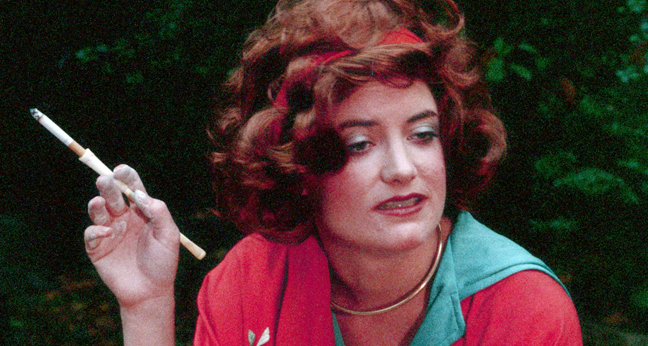
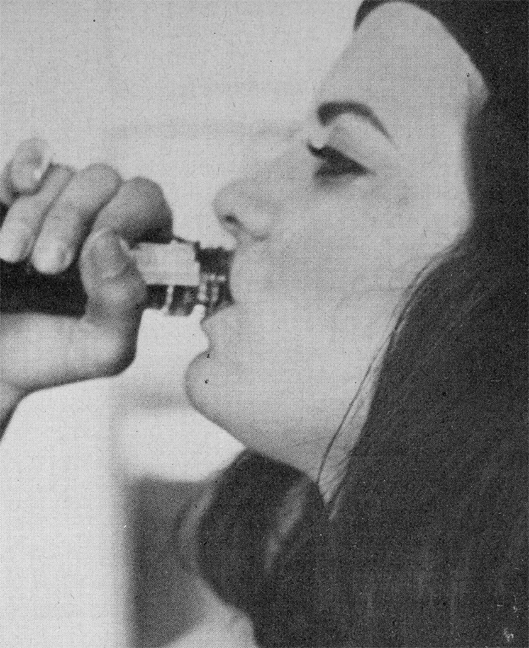
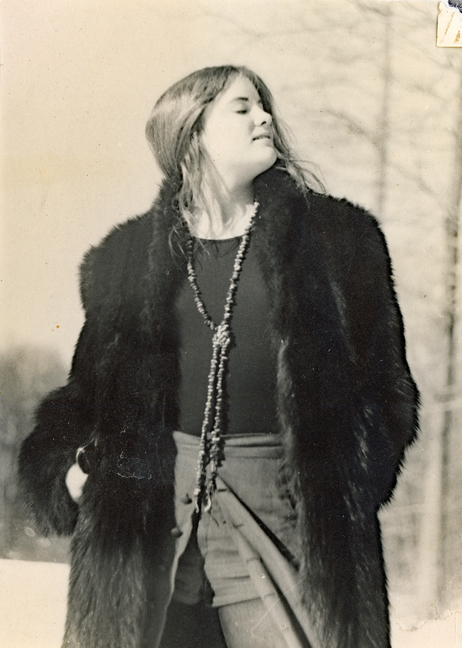
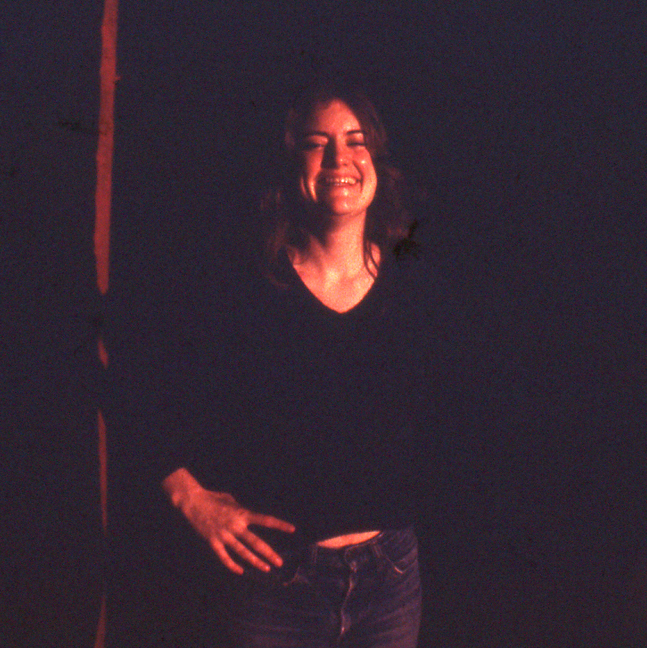
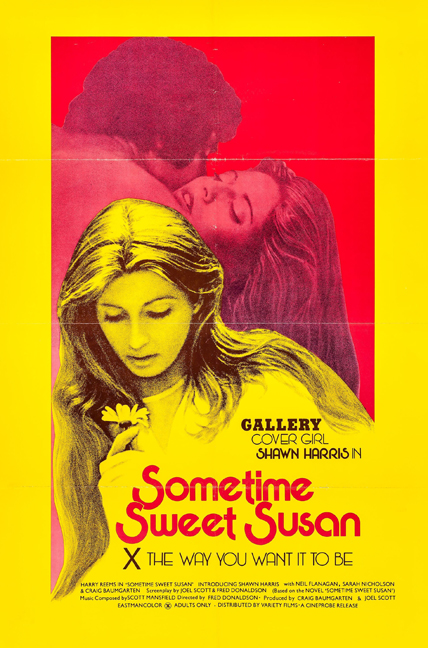
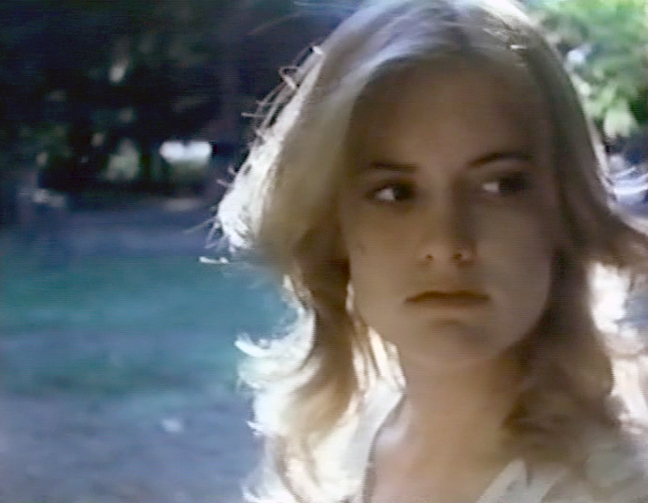
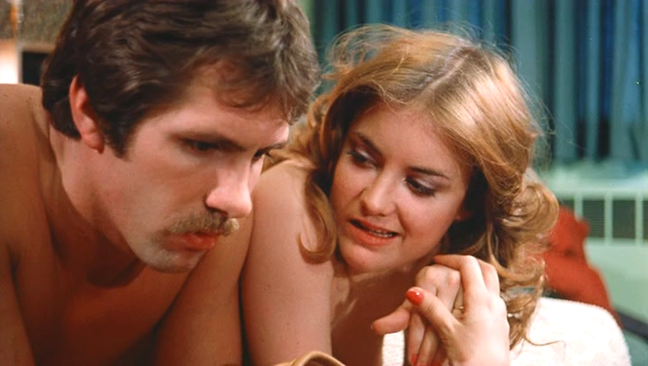
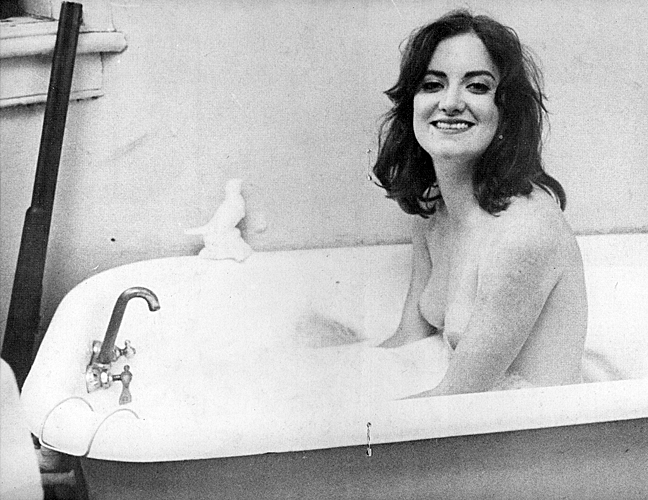
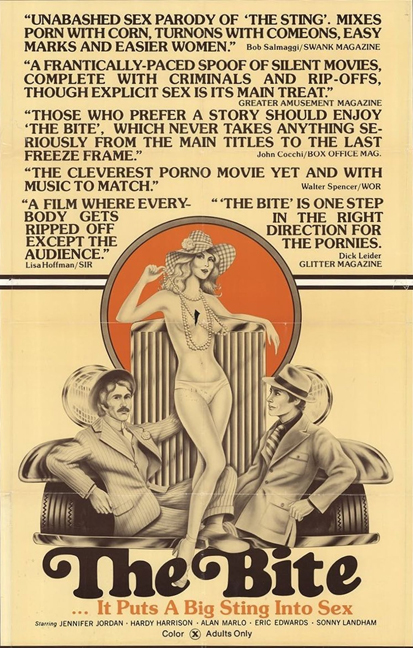
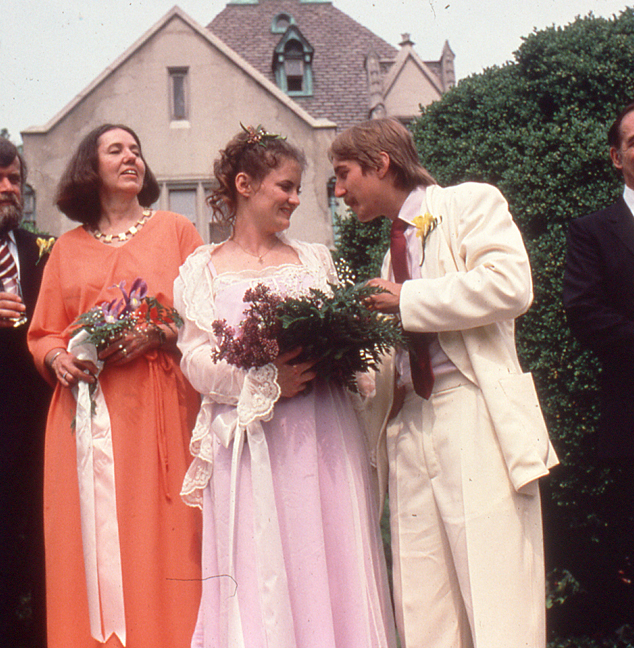
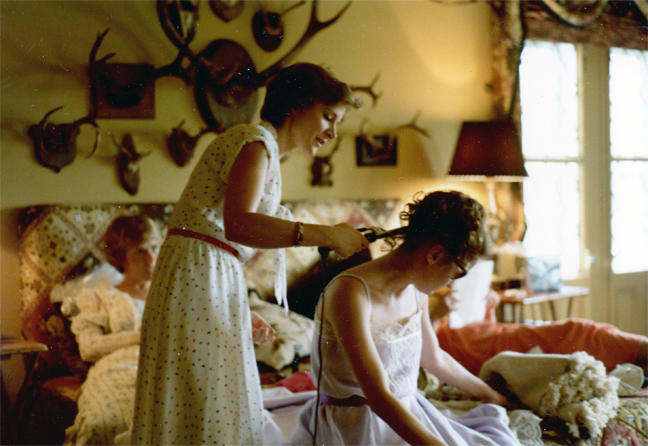
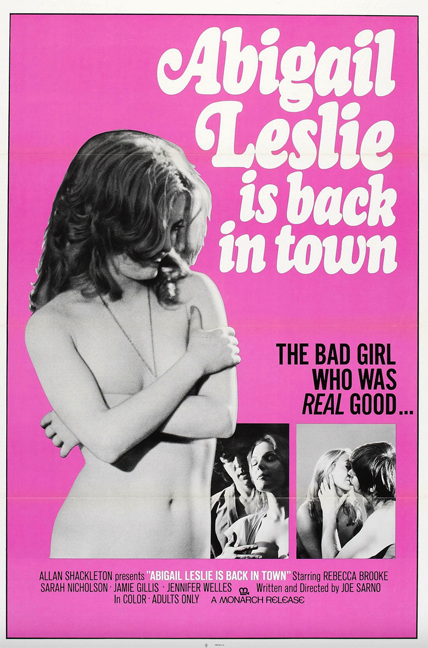
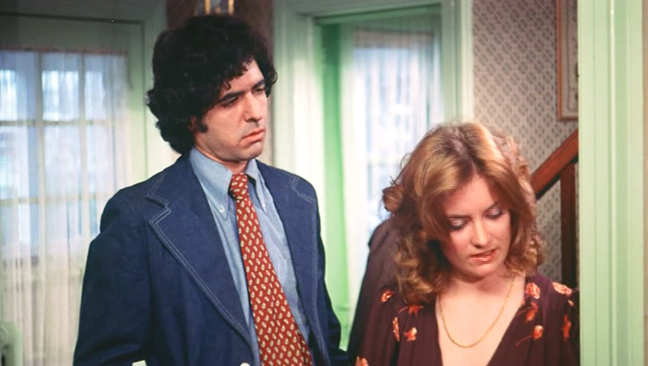
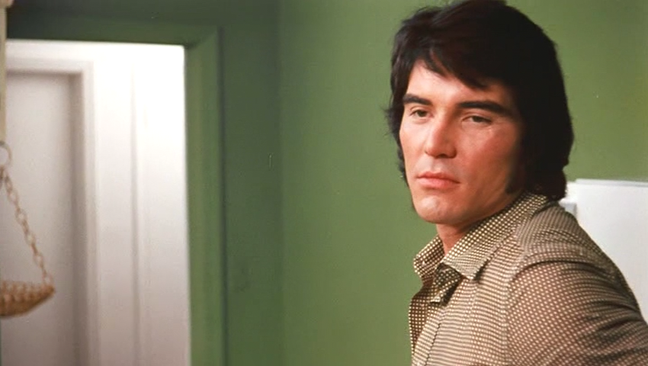
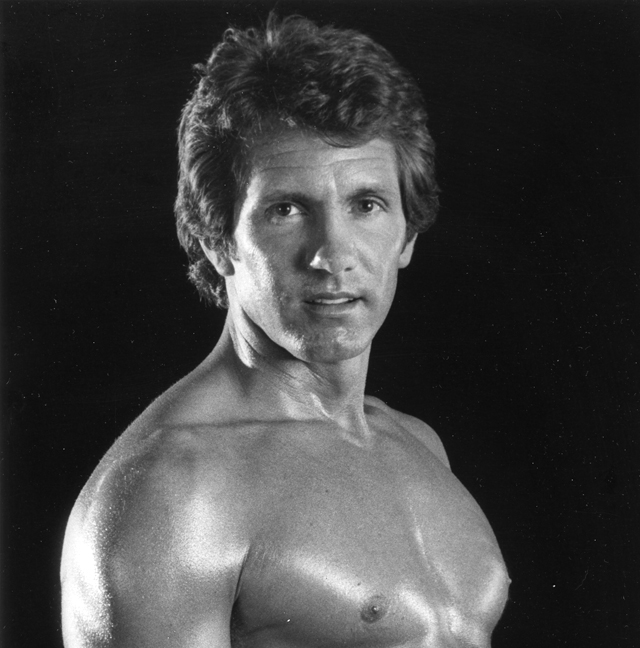
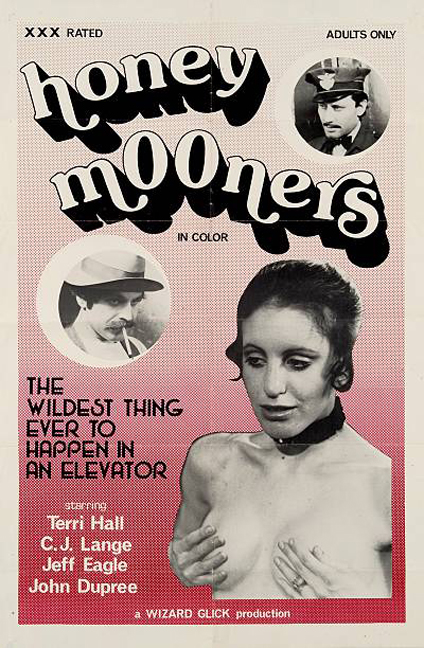
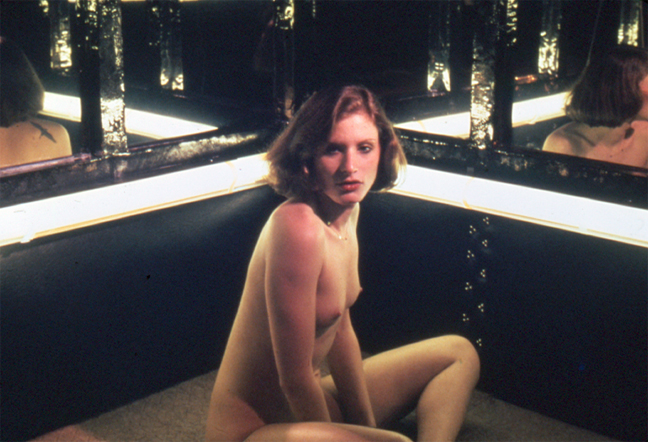

Another winner!
What I most appreciate is hearing about the real life of these people who been in our lives for (for some of us) many years. Sarah’s theater years before XXX are a revelation.
Thank you James!
Another week of waiting to hear more… such a tease!
Awesome Article Keep Up Good Work
Thanks as always Jeff!
So cool! I always remembered her from Abigail Leslie, definitely one of my favourites. Can’t wait for part 2!
Thank you Mike!
I’ve heard apologists say Kent state shooting was accidental. Pulling trigger may have been. But the government aggressively created the malignant situation where that accident could happen. Stochastic terrorism. Lead the heavily armed lunatics down the primrose path.
I highly recommend Derf Backderf’s graphic novel “Kent State: Four Dead in Ohio.” Derf himself was a boy when it happened and lived nearby. He draws a narrative collected in part from people who were there, one of whom was Chris Butler from the band The Waitresses. It’s an excellent book, well researched and informed, and will make you angry as hell too. It’s so interesting that the guys from DEVO were there and it led to that band, as was Chrissie Hynde from The Pretenders and Joe Walsh, and as it turns out Jennifer Jordan.
Brillant as Always. Can’t Wait for Part 2. Stay Cool & Ciao.
Thanks grendevaldez!
Great interview. John-Michael Tebelak didn’t commit suicide he had a heart attack in 1985.
Thanks Michael – as oral historians we capture people’s memories and that’s how Jennifer remembered John-Michael. But appreciate your note for context for other readers.
You NEVER cease to amaze, RR!
‘Bum-fucksville’ – I’ve written that down.
Thanks JWP!
Wonderful interview! Jennifer really got to work with some big names. Eric Edward’s always is sweet in films. Nice looking guy.
I say, “Acting is acting”. Glad she was able to do what she was interested in. I didn’t know adult film actors were getting SAG cards kind of “under the table”. Good for you, Jennifer!